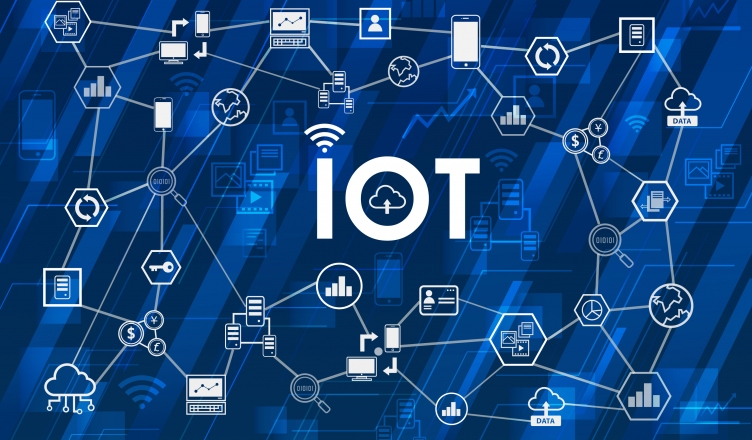The Internet of Things or IoT is one of the hottest topics in the IT industry, and you might have also heard the term being thrown around in conversations inside and even outside of your own office or workplace. But, what is the IoT and how will it affect our everyday lives?
IoT Defined
Let’s try to define IoT in very simple terms that are free of technical jargon. The main concept of IoT is very simply linking any device or equipment that have sensors that can collect information, and have network capability to the internet. These gadgets can be anything and everything – coffee makers, fridge, headphones, thermostats, cars, oil rigs and whatever else that you can think of.
These gadgets will then generate data that IoT software can use to collect, analyze and eventually deliver reports that can help users make informed choices.
Networking giant Cisco is predicting that by the year 2030, 500 billion devices will be connected to the internet. That’s a giant network right there, and it is said that in the very near future, the relationship and communication will be between people to people, people to things and things to things.
Who Invented the term IoT
The IoT is not a new concept, but the term was invented by Kevin Ashton, sometime in the year 1999. Internet of Things was the title of a business presentation when he was employed by Procter & Gamble.
It all started when he put an RFID tag on lipstick and had them ‘communicate’ with a radio receiver. These lipsticks with the RFID tags were used to track sales and inventory as well as to inform when it needed to be restocked. And, thus, the term IoT was born.
IoT in the Real World
Here are some ways that we are already benefiting from the IoT in our daily lives:
Personal Items
IoT is present in wearable devices that we use like fitness trackers and heart monitors thru apps on our smartphones or in smartwatches like the Apple watch and Pebble that are sending and receiving data over the internet to track our health as well as our fitness.
IoT is also present in cameras (phones and stand-alone cameras) that can send pictures over the internet, and weighing scales that can send our weight to be shared on social media, or even toothbrushes that analyze our habits in brushing.
Household Appliances
We are now using a lot of household items like refrigerators, heaters, security cameras and even lights that the user can control remotely and even send messages to the user thru the internet when there is a problem.
There are also doors in your garage as well as digital locks on your house doors that let you come in with the information on your phone instead of a physical key.
Ovens and stoves that are connected to the internet allow the user to be able to monitor it and can be turned on or off remotely – great news for people who always end up turning back home every time to check if they’ve turned off the stove.
Automobiles and Machines
GPS has been a standard in cars for years, and there are also attachable toll tags that allow cars to pass thru automatically.
Now, there are self- driving cars that are starting to show up in the road where the cars are equipped with sensors to monitor the road, to find out where it is, and to monitor nearby vehicles and humans and react when so that it doesn’t collide with them and cause an accident.
Despite the reputation of being a bit xenophobic when it comes to technology, the construction industry has been using telematics (sensors in machines that monitors its performance and operation) for years. This fact that can come as a surprise because it’s been a few years since the industry has started to use top commercial construction project management software, or RFI software tools, to streamline its construction process.
Telematics in construction machines can be as simple as just keeping track of the hours spent being in operation, fuel usage and its current location. But some of the more advanced construction machinery have sensors that can track more complicated things like engine load, fluid temperatures and other parameters to make sure the machine works the way it’s supposed to and lessens the need for repairs and tune-ups.
Security and Data Concerns
Despite all the benefits that the IoT brings to the table there are also growing concerns about data and security.
We already have a lot of data about ourselves that we put on the internet which includes photos, personal information, bank information etc. Now, in addition to this, the everyday devices that we use are putting in even more information about us and our personal lives.
We are feeling the effects of the analysis of what is called big data ( huge data used to analyze trends) when we see ads targeting us thru our social media accounts or just when we browse the internet. Our connected devices also allow targeted ads to pop up on our phones wherever we are.
Another worry that people have is the danger of IoT devices being hacked. Remember that machines and appliances that have IoT are constantly sending information about us like our location, activities, health and even videos from our homes. If unscrupulous individuals gain access to these things, they can have the potential to do a lot of very disturbing things like spy on you, see what’s going on in your house, break into your house, or even divert your car while you’re in it.
But the good news is that companies have already taken steps to protect personal data, and more sophisticated means are coming up to protect devices from being accessed by cybercriminals. We must remember that technology like IoT is neither good or bad, it just depends on how people use it.

